
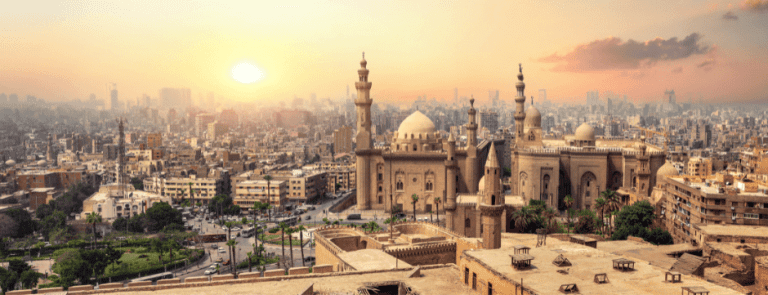
Home » Weekly Blog » Must-See Hidden Gems of Cairo – Sites Tourists Often Miss
Cairo. Just the name conjures up images of bustling bazaars, ancient pyramids, and the timeless majesty of the Sphinx. But let’s face it, when most people think of Cairo, their minds immediately go to the Giza Plateau, the Egyptian Museum, and perhaps a sunset cruise along the Nile. Sure, these are iconic landmarks, no doubt about it. But here’s the kicker – Cairo is so much more than just its world-renowned tourist attractions. Beneath the surface of this historic metropolis lies a treasure trove of hidden gems, just waiting to be discovered. And guess what? Most tourists completely miss out on them.
If you’re reading this, chances are you’re not content with just scratching the surface. You want more than the usual tourist trail. You crave the authentic, the untouched, the undiscovered. You want to experience Cairo like a true explorer, delving into its lesser-known nooks and crannies. And trust me, the rewards are immense.
So, buckle up and get ready. We’re about to embark on a journey through the hidden gems of Cairo – places that will leave you awestruck and make you wonder why they aren’t swarmed with tourists. By the time we’re done, you’ll be itching to pack your bags and book a tour with Ancient Navigator to uncover these secret treasures yourself.
First stop, Bayt Al-Suhaymi.
Tucked away in the heart of Islamic Cairo lies Bayt Al-Suhaymi, a stunning 17th-century Ottoman-era house that feels like a portal to the past. Unlike the crowded corridors of the Egyptian Museum or the tourist-laden pyramids, Bayt Al-Suhaymi offers a serene escape where you can truly soak in the history and culture of the time.
Bayt Al-Suhaymi isn’t just any old house. It’s an architectural marvel that stands as a testament to the grandeur of Ottoman residential design. From the intricate wooden latticework of the mashrabiya windows to the lush inner courtyard that offers a respite from Cairo’s hustle and bustle, every corner of this house tells a story.
As you walk through its rooms, you can almost hear the whispers of the past. The house was built in 1648 by Sheikh Abdel Wahab el-Tablawy and later expanded by its namesake, Sheikh Ahmed Al-Suhaymi. It served as a family residence for generations, a place where the affluent lived, entertained, and carried out their daily lives. The attention to detail in the woodwork, the ornate ceilings, and the delicate tiles speaks volumes about the craftsmanship of the era.
Why is Bayt Al-Suhaymi a hidden gem, you ask? It’s simple. While hordes of tourists flock to the major landmarks, Bayt Al-Suhaymi remains a tranquil haven, often overlooked by the masses. This is where you can escape the throngs and immerse yourself in a piece of Cairo’s history that feels both intimate and grand.
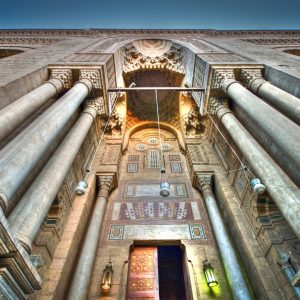
Not far from the more famous Sultan Hassan Mosque stands El Refai Mosque, a gem that’s often overshadowed but no less magnificent. Built in the late 19th and early 20th centuries, El Refai Mosque is a masterpiece of Islamic architecture, blending traditional and modern elements seamlessly.
The mosque was intended as a royal mausoleum, and it houses the tombs of several members of the Egyptian royal family, including the last Shah of Iran. The exterior, with its towering minarets and intricate stonework, is breathtaking. Inside, the vast prayer hall, adorned with gold and marble, exudes a sense of reverence and awe.
So why isn’t El Refai Mosque swarming with tourists? Perhaps it’s because it sits in the shadow of its older, more famous neighbor. But that’s precisely what makes it such a treasure. Visiting El Refai Mosque feels like stepping into a serene sanctuary, away from the bustling crowds. It’s a place where you can reflect, admire, and truly appreciate the splendor of Islamic art and architecture.
Next time you’re in Cairo, don’t just stick to the beaten path. Venture a little further, and you’ll find places like Bayt Al-Suhaymi and El Refai Mosque waiting to be discovered. These hidden gems offer a glimpse into a different side of Cairo – one that’s rich in history, culture, and beauty. And the best part? They’re all there, quietly waiting for those who seek more than just the usual tourist fare.
Now, let’s move on to uncovering some of Cairo’s artistic treasures and museums that often get overlooked. Trust me, you won’t want to miss this.
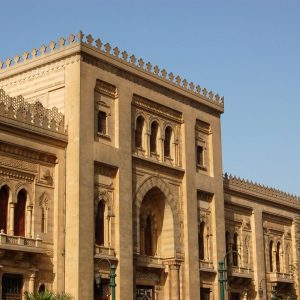
Let’s take a journey into the realm of art and history with a visit to the Gayer-Anderson Museum. Nestled beside the Mosque of Ibn Tulun, this museum is a hidden gem that promises to captivate your imagination and transport you back to the Cairo of yesteryear.
The Gayer-Anderson Museum is named after Major R.G. Gayer-Anderson, a British army officer and passionate collector of antiquities. He restored two 16th-century houses and filled them with an eclectic mix of Islamic, Pharaonic, and Oriental art. What you get is not just a museum, but a living testament to the confluence of cultures that make Cairo so unique.
As you step inside, you’re greeted by a labyrinth of rooms, each more enchanting than the last. The museum’s layout, with its narrow passageways, hidden courtyards, and rooftop terraces, invites exploration and discovery. Every room is meticulously curated, showcasing a blend of artifacts that range from ancient Egyptian statues to exquisite Persian carpets and delicate Chinese porcelain.
One of the museum’s highlights is the breathtaking “Persian Room,” adorned with intricate woodwork and beautiful stained glass windows that cast a magical light. The ambiance here is nothing short of enchanting, offering a serene and contemplative space away from the city’s chaos.
Why is the Gayer-Anderson Museum often missed by tourists? Perhaps it’s overshadowed by the grandeur of the nearby mosques, or maybe its charm lies in its quiet, unassuming presence. But for those who seek it out, the museum offers an unparalleled glimpse into Cairo’s rich cultural tapestry.
While the Egyptian Museum draws throngs of visitors eager to see Tutankhamun’s treasures, the Museum of Islamic Art often sits quietly in the background. Yet, this museum is a veritable treasure trove of Islamic heritage, housing one of the most comprehensive collections of Islamic art in the world.
Located in the heart of historic Cairo, the Museum of Islamic Art boasts an impressive array of artifacts spanning over a millennium. From delicate ceramics and intricate textiles to grand architectural elements and ancient manuscripts, the museum’s collection is both vast and varied.
One of the standout pieces is the stunning collection of metalwork, featuring beautifully crafted items such as lamps, jewelry, and arms that showcase the exquisite craftsmanship of Islamic artisans. The museum also houses an extensive collection of Quranic manuscripts, each a work of art in its own right, adorned with elaborate calligraphy and illumination.
So, why do so many tourists overlook this cultural gem? Perhaps it’s the misconception that Cairo’s allure lies only in its ancient pharaonic past. However, those who venture into the Museum of Islamic Art are rewarded with an in-depth understanding of the rich and diverse history that has shaped the Islamic world.
The museum’s serene atmosphere provides a perfect escape from the city’s bustling streets, allowing visitors to appreciate the beauty and intricacy of Islamic art in a tranquil setting. It’s a must-visit for anyone looking to delve deeper into Cairo’s multifaceted history and culture.
Art lovers, history buffs, and curious travelers alike will find the Gayer-Anderson Museum and the Museum of Islamic Art to be incredible discoveries that offer a deeper, richer understanding of Cairo’s artistic heritage. These are the places where the city’s soul truly shines, away from the well-trodden paths of typical tourist itineraries.
Ready to explore more of Cairo’s hidden gems? Let’s head to some of the city’s most scenic and recreational spots that offer a refreshing change of pace and a chance to experience Cairo’s natural beauty.

Imagine a sprawling oasis of green in the midst of Cairo’s urban sprawl, where the city’s cacophony fades into the background, replaced by the soothing sounds of chirping birds and rustling leaves. This is Al-Azhar Park, one of Cairo’s best-kept secrets, offering a tranquil retreat with breathtaking views of the city’s skyline and historical landmarks.
Al-Azhar Park is not just any park; it’s a testament to Cairo’s ability to blend history with modernity. Opened in 2005, this 30-hectare green space was once a derelict area used as a garbage dump for over 500 years. The transformation of this land into a lush, beautifully landscaped park is a remarkable story of urban renewal.
As you stroll through the park, you’ll encounter meticulously maintained gardens, serene water features, and picturesque pathways that invite leisurely exploration. The park’s design draws inspiration from traditional Islamic gardens, with symmetrical layouts, fountains, and an abundance of flora.
One of the park’s highlights is its panoramic views. From various vantage points, you can gaze upon the majestic skyline of Islamic Cairo, with its domes and minarets rising against the backdrop of a vibrant sunset. The sight of the Citadel of Saladin, the Sultan Hassan Mosque, and the countless other historical edifices is nothing short of awe-inspiring.
Why is Al-Azhar Park a hidden gem? Despite its beauty and the respite it offers, many tourists overlook it in favor of more famous landmarks. But those who take the time to visit are rewarded with a serene escape that showcases a different side of Cairo – one that is peaceful, green, and refreshingly modern.
Step into the world of Egyptian royalty at Manial Palace, a stunning estate built by Prince Mohammed Ali Tewfik in the early 20th century. This hidden gem is a fusion of various architectural styles, combining traditional Islamic motifs with European influences, resulting in an opulent and unique aesthetic.
Located on Rhoda Island in the Nile, the Manial Palace complex includes a palace, museum, and extensive gardens. The palace itself is a visual feast, with richly decorated rooms that showcase an array of luxurious furnishings, elaborate tapestries, and intricate woodwork.
One of the most captivating aspects of the palace is its blend of different cultural influences. The design reflects the prince’s travels and his passion for collecting art from around the world. From Ottoman-inspired rooms to Moroccan-style courtyards, the palace is a testament to the eclectic tastes of its owner.
The palace gardens are equally impressive, offering a tranquil haven with their lush greenery, exotic plants, and serene water features. Walking through these gardens, you can easily forget you’re in the middle of one of the world’s busiest cities.
Despite its grandeur, Manial Palace remains under the radar for many tourists, who often miss this gem in favor of more famous sites. But for those who venture here, the palace offers a glimpse into a royal lifestyle and a chance to explore one of Cairo’s most beautiful and serene locales.
In Al-Azhar Park and Manial Palace, you’ll find two of Cairo’s most enchanting retreats. These spots offer a perfect blend of history, culture, and natural beauty, providing a refreshing escape from the city’s bustling streets and crowded tourist hotspots.
Ready to uncover more of Cairo’s hidden treasures? Let’s dive into the local markets and neighborhoods that offer a true taste of Cairo’s vibrant culture and daily life.

In the vibrant heart of Islamic Cairo lies the El-Ghouriya Complex, a historical treasure trove that offers a mesmerizing glimpse into the past. While tourists flock to Khan El Khalili bazaar, only a few venture further to discover the hidden beauty of El-Ghouriya. This complex, an architectural marvel from the Mamluk era, offers a rich tapestry of history and culture that is both captivating and enlightening.
The El-Ghouriya Complex was built by Sultan Al-Ghouri, one of the last Mamluk sultans, in the early 16th century. The complex includes a mosque, a madrasa (school), a mausoleum, and a sabil-kuttab (public fountain and school), all intricately decorated and well-preserved. The architecture is a testament to the splendor of the Mamluk period, with its elaborate facades, beautiful domes, and ornate minarets.
As you walk through the complex, you are transported back in time. The mosque, with its impressive vaulted ceilings and detailed arabesques, is a serene place for reflection. The madrasa, once bustling with students, now stands as a quiet reminder of the importance of education in Islamic culture. The mausoleum, with its intricate tile work and solemn atmosphere, serves as the final resting place of Sultan Al-Ghouri himself.
One of the most enchanting aspects of the El-Ghouriya Complex is its atmosphere. Unlike the crowded and often commercialized Khan El Khalili, El-Ghouriya offers a more authentic and less hurried experience. Here, you can take your time to explore, appreciate the architectural beauty, and soak in the historical significance without the distraction of large tourist groups.
So why is El-Ghouriya often overlooked? Perhaps it’s because it doesn’t feature in many guidebooks, or maybe it’s overshadowed by more famous landmarks. But for those who make the effort to visit, it offers an enriching experience that goes beyond the typical tourist trail. It’s a hidden gem that provides a deeper understanding of Cairo’s rich history and cultural heritage.
For a completely different vibe, head to Zamalek Island. Located in the Nile, this upscale neighborhood is a stark contrast to the hustle and bustle of downtown Cairo. Known for its leafy streets, charming cafes, and cultural spots, Zamalek offers a more relaxed and sophisticated side of the city.
Zamalek is home to many embassies, making it one of the most cosmopolitan areas in Cairo. As you stroll through its tree-lined avenues, you’ll encounter a mix of architectural styles, from grand colonial mansions to modern high-rises. The island’s calm and orderly streets are a welcome respite from the chaos of the city.
One of the highlights of Zamalek is its vibrant arts scene. The Cairo Opera House, located on the southern tip of the island, hosts a variety of performances, from classical music and ballet to contemporary theater. Nearby, the Museum of Modern Egyptian Art showcases a stunning collection of works by Egyptian artists, providing a fascinating insight into the country’s artistic heritage.
Zamalek is also a foodie’s paradise. The island is dotted with numerous cafes, restaurants, and bistros, offering a wide range of culinary delights. From traditional Egyptian dishes to international cuisine, there’s something to satisfy every palate. Enjoy a leisurely brunch at one of the trendy cafes, or indulge in a fine dining experience at a riverside restaurant with stunning views of the Nile.
So why is Zamalek not on every tourist’s itinerary? Perhaps it’s because it’s seen as more of a residential area or maybe its charms are subtler and less obvious than the grandeur of Cairo’s historic sites. But for those who take the time to explore, Zamalek offers a delightful mix of culture, cuisine, and tranquility that’s hard to find elsewhere in the city.
Exploring El-Ghouriya Complex and Zamalek Island offers a unique perspective on Cairo’s diverse character. These neighborhoods provide a perfect balance of history, culture, and modernity, making them must-see destinations for anyone looking to experience the true essence of Cairo.
Ready to dive deeper into Cairo’s spiritual and religious heritage? Let’s explore some of the city’s most awe-inspiring spiritual sites that often go unnoticed by the typical tourist.
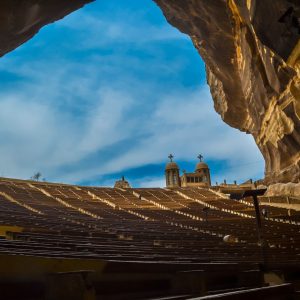
Nestled in the Mokattam hills, away from the bustling streets of Cairo, lies the Cave Church of St. Simon the Tanner. This extraordinary site, also known as the Monastery of Saint Simon, is one of the city’s most awe-inspiring hidden gems. Despite its grandeur and significance, it remains largely undiscovered by mainstream tourists.
The Cave Church is the largest church in the Middle East, with a capacity to seat over 20,000 people. Carved into the rock of Mokattam Mountain, this impressive structure stands as a testament to the devotion and resilience of Cairo’s Coptic Christian community. The church is named after St. Simon the Tanner, a 10th-century saint known for his miraculous deeds and deep faith.
The journey to the church itself is an adventure, taking you through the narrow, winding streets of Garbage City, where the Zabbaleen community – Cairo’s informal garbage collectors – live and work. This area, despite its harsh living conditions, showcases an incredible sense of community and resilience. As you ascend the hill, the contrast between the bustling city below and the serene sanctuary above becomes starkly apparent.
Upon entering the church, you are immediately struck by its vast, cavernous interior and the sense of peace that permeates the space. The walls of the church are adorned with beautiful biblical carvings and murals created by a Polish artist, Mario. These artworks vividly depict scenes from the Bible, bringing the stories to life in a unique and captivating way.
Why is the Cave Church of St. Simon the Tanner a hidden gem? Its location, tucked away in the Mokattam hills and beyond the usual tourist routes, means it often goes unnoticed. However, for those who seek it out, the church offers a deeply spiritual and moving experience. It’s a place where history, faith, and art converge, providing a sanctuary for reflection and inspiration.
In the heart of Cairo’s Old City, within the area known as Fustat, stands the Ben Ezra Synagogue, a site of immense historical and religious significance. This synagogue is one of the oldest in Egypt and holds a special place in the history of Judaism.
The Ben Ezra Synagogue is renowned for being the site where the Cairo Geniza was discovered. The Geniza is a treasure trove of Jewish manuscripts and documents, dating back as far as the 9th century. These documents provide invaluable insights into the social, economic, and religious life of the Jewish community in medieval Cairo and beyond.
The synagogue itself is a beautiful building, with its origins dating back to the 9th century. It has been reconstructed and restored multiple times over the centuries, preserving its historical essence while adapting to the needs of its community. The interior is adorned with intricate woodwork, marble pillars, and a beautifully decorated ark that houses the Torah scrolls.
Visiting the Ben Ezra Synagogue is like stepping back in time. The quiet, contemplative atmosphere inside the synagogue contrasts with the bustling streets outside. It’s a place where you can reflect on the rich history of the Jewish community in Cairo and appreciate the cultural and religious diversity that has characterized the city for centuries.
So why do so many tourists miss out on visiting the Ben Ezra Synagogue? Perhaps it’s overshadowed by the more famous sites like the Egyptian Museum and the Pyramids. However, for those who venture here, the synagogue offers a unique glimpse into the Jewish heritage of Cairo, enriching their understanding of the city’s multifaceted history.
The Cave Church of St. Simon the Tanner and the Ben Ezra Synagogue are two of Cairo’s most profound spiritual sites. Each offers a unique window into the city’s rich religious tapestry, inviting visitors to explore and reflect on the diverse faiths that have shaped Cairo over the centuries.
Exploring the hidden gems of Cairo is like peeling back layers of history, culture, and spirituality that many tourists never get to experience. From the serene beauty of Bayt Al-Suhaymi and the architectural splendor of El Refai Mosque to the artistic treasures of the Gayer-Anderson Museum and the Museum of Islamic Art, Cairo offers a wealth of lesser-known sites that provide a deeper, more intimate understanding of the city.
The lush landscapes and panoramic views of Al-Azhar Park and the regal elegance of Manial Palace offer tranquil escapes within the bustling metropolis. Meanwhile, the vibrant El-Ghouriya Complex and the cosmopolitan charm of Zamalek Island showcase the dynamic and diverse character of Cairo’s neighborhoods.
Spiritual journeys to the Cave Church of St. Simon the Tanner and the Ben Ezra Synagogue reveal the profound religious heritage that has shaped Cairo into the city it is today. These sites, often missed by the typical tourist, offer moments of reflection and insight into the spiritual lives of Cairo’s diverse communities.
Each of these hidden gems is a testament to Cairo’s rich tapestry of history and culture, waiting to be discovered by those who venture beyond the well-trodden paths. They provide a more authentic, enriching experience that goes far beyond the usual tourist attractions.
Best Times to Visit:
Sign up to hear about our upcoming adventures, monthly newsletter, exclusive offers, and more!
Required*
Not Ready to book?
Get regular updates on upcoming tour and special promotions.


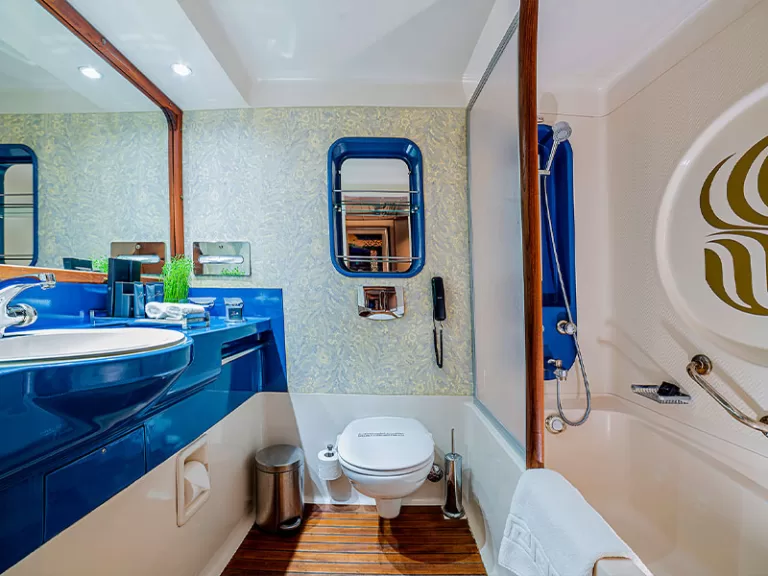

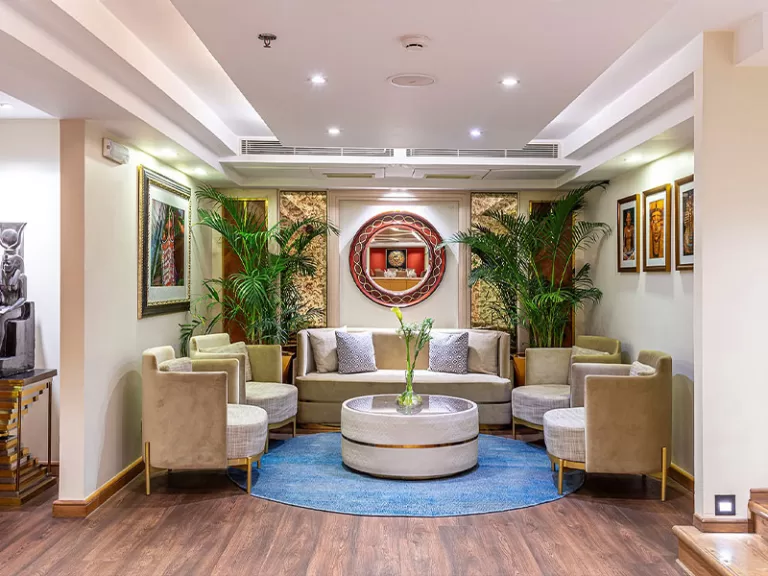

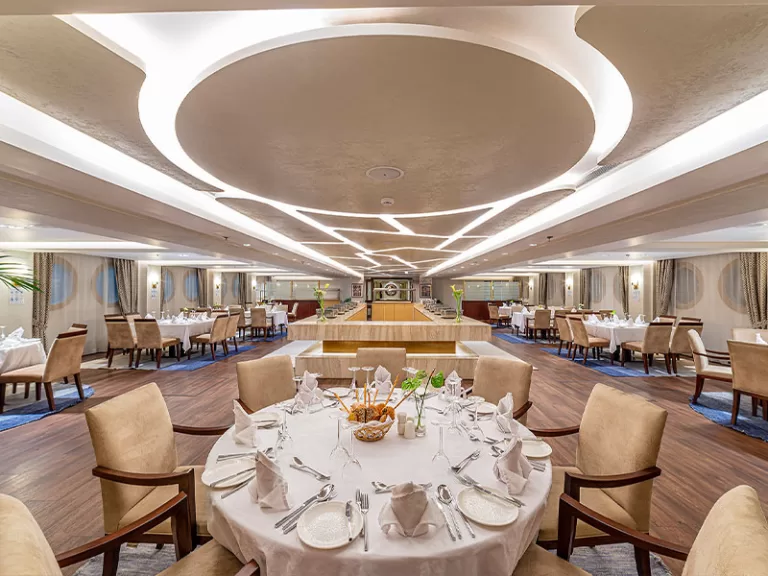
Sign up for our Mailing List to get updates on our current offerings.

We look forward to seeing you on one of our tours!